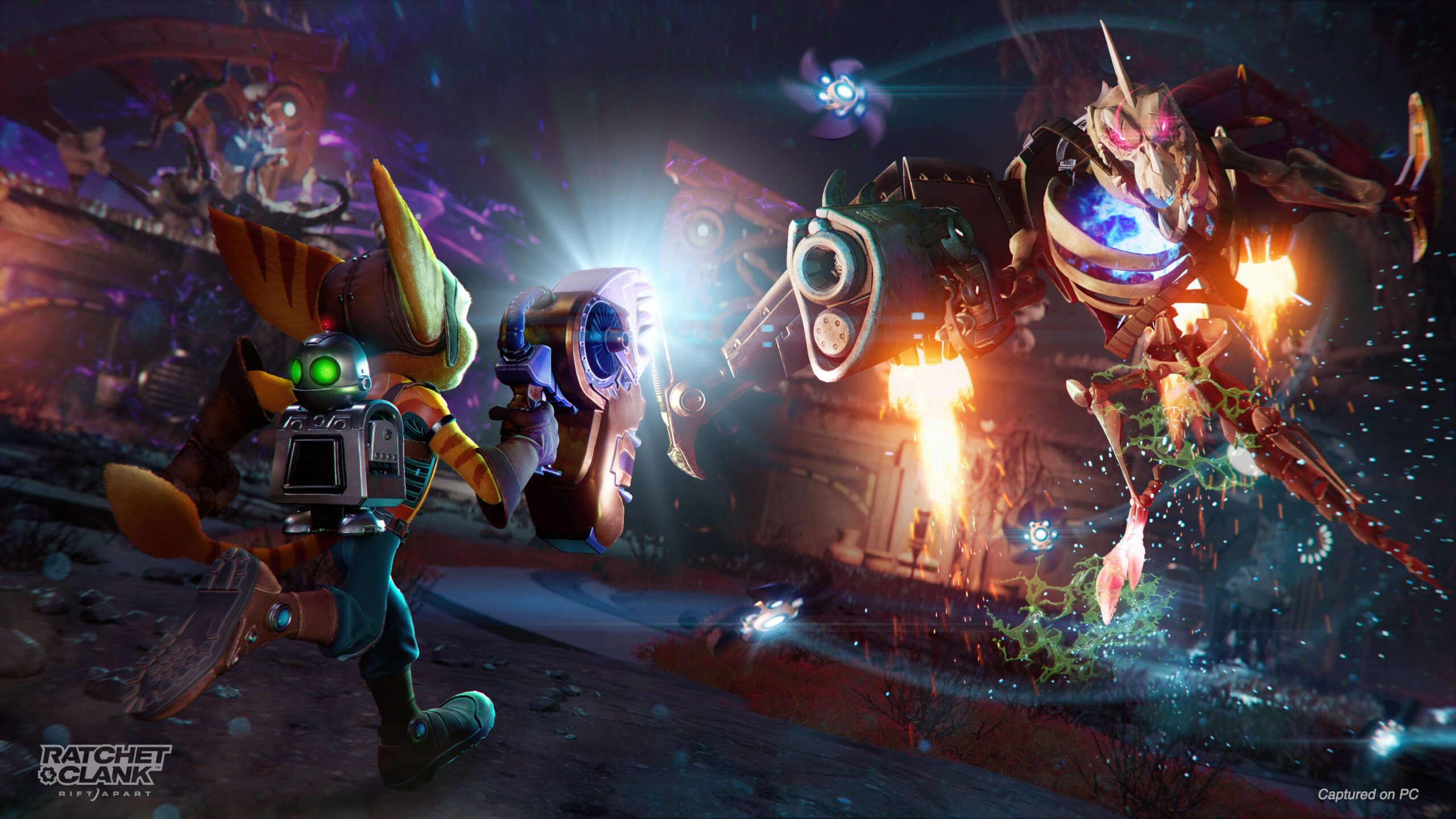Next week, Ratchet & Clank: Rift Apart is out on PC! Many of you have asked for details on the technologies used and the system requirements. Today we answer those questions, and on top of that we have some exciting new feature announcements.
To ensure a smooth dimension jumping experience, our team implemented DirectStorage 1.2 in Ratchet & Clank: Rift Apart on PC, including GPU decompression.
Richard van der Laan, Senior Lead Programmer at Nixxes Software, explains, “To enable fast loading and instant transition between dimensions, the game needs to be able to load assets quickly. DirectStorage ensures fast loading times and GPU decompression is used at high graphics settings to stream assets in the background during playback. Traditionally this decompression is handled by the CPU, but at some point there is an advantage to letting the GPU handle this, as it allows for higher bandwidth for streaming assets from storage to the graphics card. We use it to quickly load high quality textures and environments with a high level of detail.
Lead Programmer Alex Bartholomeus: “For Ratchet & Clank: Rift Apart on PC, we’ve added adaptive streaming based on live measurement of available hardware bandwidth. This allows us to tailor the texture streaming strategy for the best possible texture streaming on any setup. Together with DirectStorage, the use of a fast NVMe SSD and GPU decompression, this results in very responsive texture streaming, even at the highest settings.
DirectStorage is developed to fully exploit the speed of fast PCIe NVMe SSDs, but the technology is also compatible with SATA SSDs and even traditional hard drives. This means that Ratchet & Clank: Rift Apart on PC can use the same technology to load data regardless of your system’s storage device.
Ambient occlusion by ray tracing and XeGTAO
In our initial announcement, we shared that Ratchet & Clank: Rift Apart on PC will feature newly added ray-traced reflections and ray-traced shadows for natural exterior light. Today we can reveal the addition of another option that will further improve the realism of in-game light: ray-traced ambient occlusion, with different levels of quality to choose from.
Graphics programmer Menno Bil explains, “Ambient occlusion is a technique used in games to simulate the effect of ambient lighting on a scene. Ambient lighting is a form of indirect lighting: light reflected from other surfaces. This effect appears mainly at creases, cracks and corners where the surfaces are close to each other. Commonly used AO techniques are SSAO (Screen Space Ambient Occlusion) and HBAO+ (Horizon-Based Ambient Occlusion). These are not very demanding on the hardware, but they do not provide physically accurate results. RTAO uses ray tracing to improve the realism of ambient occlusion in-game. We’ve implemented RTAO as an add-on for those with high-end systems with ray-tracing capable hardware and processing power to spare .
Menno and the team also implemented XeGTAO, Intel’s implementation of Ground-Truth Ambient Occlusion. Like SSAO and HBAO+, this solution is based on screen space. Therefore, this technique does not allow the level of realism of RTAO, but the performance cost is much lower and comparable to that of implementing HBAO+. XeGTAO is selectable as an in-game option and works with graphics cards from all vendors.
“XeGTAO generates very high-resolution ambient occlusion that shows even the smallest geometry details,” Bil explains. “Overall, the output quality of XeGTAO is very high and looks good.”
Required configuration
Now that we have detailed all the features of Ratchet & Clank: Rift Apart for PC, it’s time to tell you more about the system requirements. When creating a PC version of a game, we worked hard on scalability. Additions like ray-traced shadows, ray-traced ambient occlusion, and triple-screen support are for those with the latest and greatest hardware so they can push their systems . With highly customizable graphics and features, we adapt the game to less powerful systems to make it accessible to as many players as possible. Below is an overview of the recommended specs for a variety of graphics presets.
Although Ratchet & Clank: Rift Apart can be enjoyed using an HDD and the minimum system requirements, we encourage players to use an SSD in combination with the recommended system requirements or higher, to experience the characteristic dimension jump gameplay of the game as originally intended.
Details regarding ray tracing support for upcoming AMD GPUs









